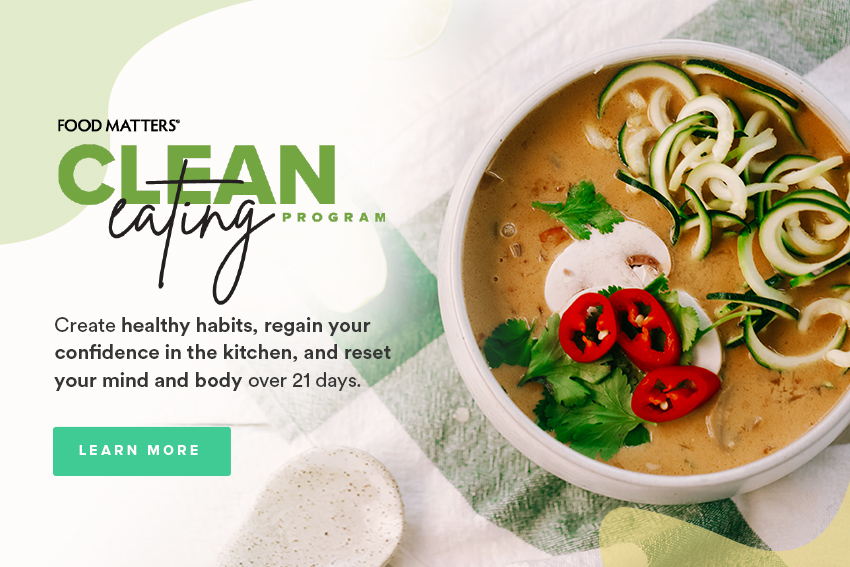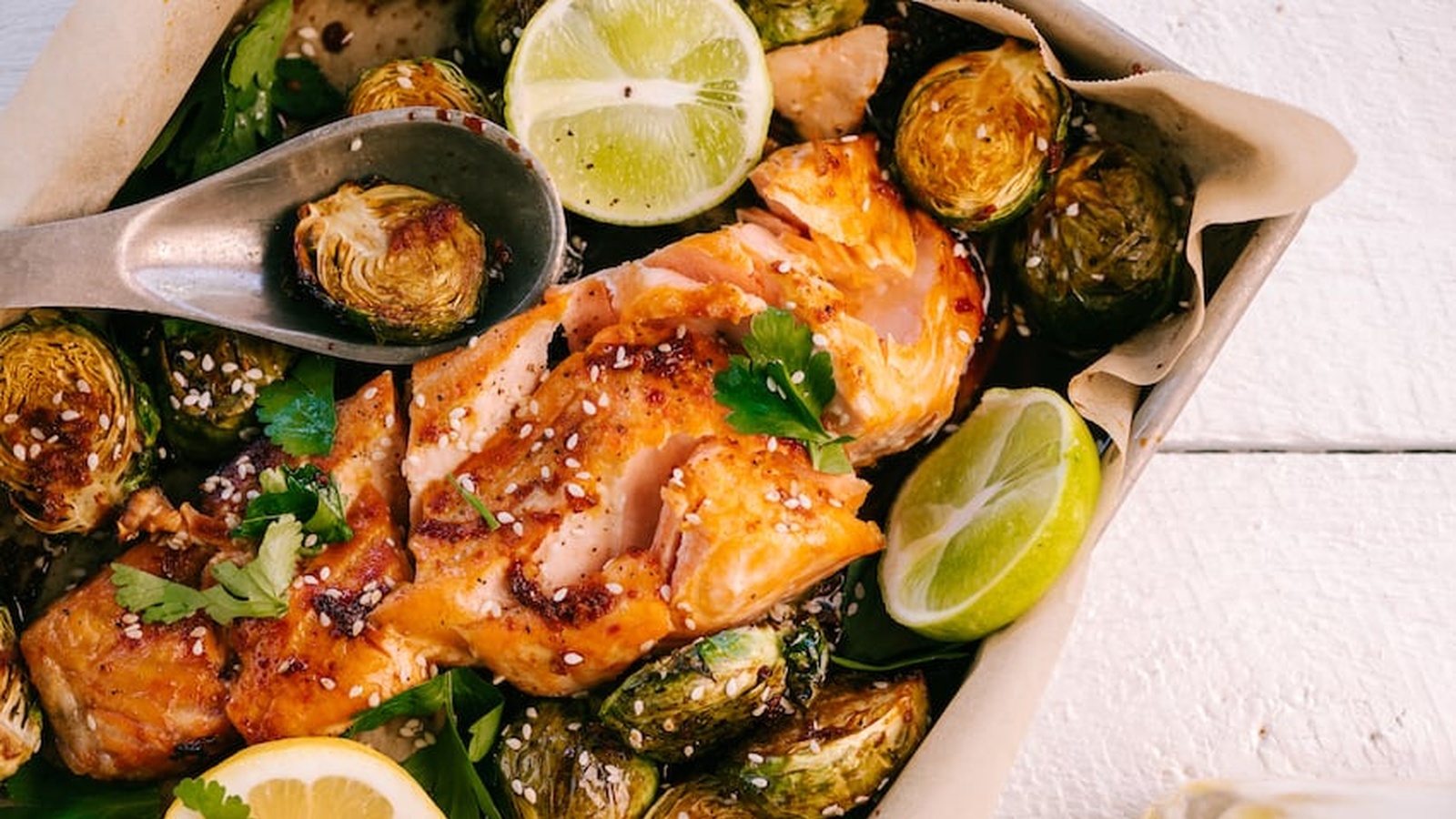How to Choose the Best Fish for Your Health
If meat is in your diet, one of the best things you can have on your plate is a serving of healthy fish. But what constitutes healthy, and what are the red flags you should be looking out for? Typically, fish is a healthy, high-protein food, especially important for its omega-3 fatty acids, which are essential fats that our bodies don’t produce on their own. But you don’t just want to go for any fish that’s served on your plate. Fish are extremely varied in their health benefits (as well as sustainable practices). If you find yourself overwhelmed for choice, or want to make a more diet-conscious decision, this is our advice on how to choose the best fish for your health.
Consider Rich & Lean Sources of Protein
A healthy, lean portion of fish is one of the easiest (and most delicious) ways to get a daily dose of protein into your diet. Many who don’t eat red meat opt for a pescatarian diet, where they’re able to absorb rich doses of complete proteins - home to the widespread amino acids their bodies are crying out for. Some protein-rich fish options include tuna (sustainably farmed), trout, sardines, and anchovies.
Consider Omega-3s & Other Fats
Omega-3 fatty acids are essential fats that our bodies aren’t able to produce on their own, so we have to get a healthy balance through food-based sources. These fatty acids play an essential role in brain and heart health. Not only have they been proven to decrease inflammation and reduce the risk of heart disease, but they’re so important for prenatal development in babies too.
Often people get an inadequate balance of omega 3 to omega 6, so tend to supplement with fish oil capsules. However, it’s easy enough to balance this out in our diets with the right fish intake. Some of our favorite fish packed with omega-3s are salmon, sardines, mackerel, and trout.
Consider Including Dark, Oily Fishes
Darker, oily fishes are where you’ll find the highest concentration of omega-3s, alongside the fat-soluble vitamins D and A. Vitamin D is a key player in calcium regulation and phosphorus maintenance in the blood, of which both factors are crucial for maintaining healthy bones. Vitamin A serves a number of purposes, including being important for healthy vision, a flourishing immune system, and reproductive function. While we tend to shy away from oily foods, fish is one instance where these oils (enjoyed with balance in mind) will do more good than harm.
Consider Cooking Methods
When cooking with fish, how much do you end up throwing away? Are there ways you can utilize all the different parts, not just for sustainability and ethics, but also to reap the widespread health benefits. Like the host of nutrients you get from drinking bone broth, fish offers incredible benefits from consuming the skin, the head, the spinal column, and the viscera.
Then, consider how you are cooking the fish. Are you doing so in a way that preserves the nutritional integrity, such as pan baking or lightly searing? Or could you be switching out the fryer in favor of something a little more health-conscious?
Consider Sustainability
Sustainable fishing is hugely important when considering what catch you should be eating. Current fishing practices are decimating entire species and the environment that they inhabit. Dolphins are often caught as a byproduct of big net trawling and depending on where you live, there will be ongoing debates around aquaculture practices. It’s a topic you can keep diving deeper into, but to keep it simple here are a couple of key questions that industry professionals believe you should be asking.
Is bigger always better? As a general rule of thumb, smaller, faster-growing fish (e.g. sardines, anchovies, herring, kahawai) reach reproductive maturity faster and therefore have more offspring in their lifetime as opposed to larger slower growing fish (e.g. tuna, snapper, marlin, sharks). These larger slow-growing fish reach reproductive maturity late (years as opposed to months) and thus produce less offspring during their lifetime, so are more susceptible to intense fishing pressure.
Who am I supporting when I buy this fish? Support local, artisanal, small-scale fisheries, always. You don’t have to look far to find cracks in the intensive commercial fishing industry and identify that it’s only a few key stakeholders contributing to a majority of the malpractices. By supporting your local fisherman, you’re guaranteed to know exactly where the fish came from and the practices that went into catching it.
Speaking of practices, how was my fish caught? Support fisheries using selective fishing methods. Opt for pole and line caught tuna (labeled as dolphin-friendly in supermarket cans) as opposed to purse seine netting. Literally anything is better than trawling. A bottom trawl net is basically a bulldozer on the seafloor. Midwater trawls are slightly better but still extremely unselective. Bycatch is real and a serious problem in all waters.
Should I buy aquaculture (marine farmed) or wild-caught? There’s a case for every side, and while we often assumed wild-caught would be better than ‘factory farmed’, there are some reasons you should play it on a fish-by-fish basis. Research has shown that aquaculture is the most likely way to supplement the inevitable future decline of fisheries worldwide. In short, we cannot keep fishing the way we are. Using destructive methods to harvest a finite resource? It’s the ultimate story of human consumption that we know all too well. In some instances, it’s worthwhile to opt for fish farmed in closed system aquaculture as opposed to marine farms in small sounds or embayments with little water flow. In closed systems, the water is filtered and circulated/reused. In open systems, if there is low water flow, waste from excess feed, excretion, and antibiotics is dispersed into the surrounding environments. Also, if you’re buying farmed fish, just like farmed meat or vegetables, why not choose organic? It is possible. However, this debate can also be flipped on its head in countries with a native fish population - such as Alaskan or Canadian salmon. Here, farmed salmon diseases can transfer to native stock who don’t get their supplemented dose of antibiotics from feeding machines. The takeaway? Make sure to research practices in your country.
A significant proportion of the world lives close to water. Whether it’s coastally like in Australia, or next to a lake or river like in America, why not take matters into your own hands? Why not get out there and try to catch a fish yourself? In doing so, it’s inherent to appreciate how hard it actually is to catch a fish. Then perhaps we’d start asking a few more questions about the fish on the plate in front of us in a restaurant, or at the local fish and chip shop.
Consider Contaminants
You are what you eat, so many fish become reflective of all that’s being dumped into the ocean. Inadvertent consumptions of microplastics washed into the waterways are increasingly raising significant concerns as scientists discover more about the growing issue. Mercury poisoning is another valid issue when it comes to the fish on your plate. Mercury is a common contaminant that often finds its way into lakes, oceans, and rivers from manmade lakes. The Environmental Protection Agency (EPA) and FDA have issued combined guidelines for women of childbearing age, pregnant and breastfeeding women, and children, recommending to avoid species of fish with higher levels of mercury such as shark, swordfish, king mackerel, and tilefish.
Another contaminant issue to be concerned with is ciguatera. This foodborne illness is caused by opting for fish that has been contaminated by certain toxins (ciguatoxin and maitotoxin). Symptoms may include diarrhea, vomiting, numbness, itchiness, sensitivity to hot and cold, dizziness, and weakness. This disease should be treated seriously but can be managed.
My Recommendations
Salmon; this oily fish is a great source of protein and healthy fats, which is why we reach for it so often in the Food Matters kitchen. If you’re looking for some good salmon recipes, you can discover them all in our upcoming Clean Eating Program.
Healthy white fish; this will change based upon where in the world you live. Fleshy, white fish with sustainable catching practices are readily available everywhere. Mahi-mahi, cod, trout, and mackerel are some of our favorite options.
When all else fails, remember my friend Dr. Mark Hyman's SMASH analogy. The healthiest, most sustainable fish can be summarised with one easy word. Salmon (wild-caught), mackerel, anchovies, sardines, and herring - they're almost all you could ever need!
Take the stress out of cooking with 21-days of guided meal plans, shopping lists, and nutrition support. You’ll find all of this, and more, in our signature Clean Eating Program.


